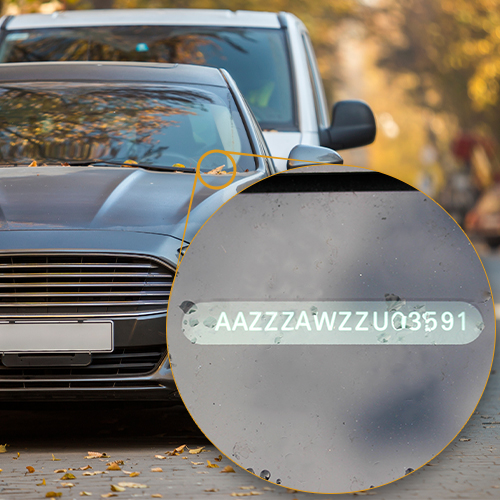Every car manufactured after 1980 has a VIN, otherwise known as a Vehicle Identification Number. It consists of a series of 17 letters and/or numbers, and each one is distinct. That means only your vehicle will have that exact VIN, nobody else’s will, making it easy to use for identification.
But why would you need this? You know it’s your vehicle, so what’s the point? Well, to be honest, the VIN’s not really for you. However, it can come in very handy for a mechanic or dealership when there’s a vehicle recall. In that instance, the VIN will show up in a safety database as either involved in the recall or not, and that’s definitely something you’d want to know. It can also be used if your vehicle is lost or stolen. In that unfortunate event, the VIN is entered into law enforcement databases of missing vehicles.
But that’s not all a VIN can do! It can be used to find out more detailed information about a vehicle. If you’ve ever seen a commercial for CarFax you’ll know what I mean. The VIN can be used to flag a car that’s been in an accident or had major repairs, which definitely comes in handy when buying secondhand. It can even help you find the right parts for your car for repairs or maintenance.
Table of Contents:
Where Can You Find the VIN?

There are actually at least 3 places you can find the VIN. The first is on top of the dashboard. You can’t see it from inside the car, but if you look through your windshield from the outside you’ll be able to see it. The second place you can find the VIN is on a panel on the driver’s side door jamb. (Obviously, you’ll have to open the door to see it). The third and last place you can find it is under the hood at the front of the engine.
So What do the Numbers Mean?

The VIN is made up of 3 main sections: the Manufacturer Identifier, Vehicle Descriptor section, and the Vehicle Identifier section. There is also a security number that follows the Vehicle Descriptor section, right in the middle of the VIN. The numbers within each section, either individually or grouped, can represent even more specific information. So let’s take a look at each section individually.
Manufacturer Identifier
This section consists of the first three characters of the VIN and represents details about the manufacturer, country of origin, and vehicle type.
- First Character: This character is a code for a country of origin. Sometimes the country code is a number (for example USA is 1; Canada, 2) and sometimes it is a letter (Japan, J; Korea, K).
- Second Character: This character is a code for identifying the manufacturer. For instance, General Motors is identified with a G here.
- Third Character: This character represents the type of vehicle, car, truck, model, etc.
If you really want to look into it, you can find a list of all the codes on Wikipedia.
Vehicle Descriptor
This section consists of the 4th through the 8th characters of the VIN. This section is what you’ll want to look at if you need parts. It’s numbers represent the model, body type, restraints, transmission, engine, etc.
Security Number
This number is a special authorization security code designated by the manufacturer. It’s job is to ensure someone can’t make a counterfeit VIN with randomly generated characters.
Vehicle Identifier
This section consists of the 10th through the 17th characters.
- Tenth Character: This character is very important as it represents the year of manufacture.
- Vehicles manufactured from 1981 through 2000 use the letters B-Y, excluding I, O, Q, U, and Z. So vehicles made in 1981 will have a B, 1982 a C, 1983 a D, etc...
- Vehicles manufactured from 2001 through 2009 will have the corresponding single digit number between 1 and 9. So 2001 will have 1, 2002 will have 2, and so on.
Vehicles manufactured from 2010 to the present use the alphabet again, this time from A-Z, but still excluding I, O, Q, U, and Z. So 2010 would be A, 2011 would be B...you’ve probably got the hang of it by now.
- Eleventh Character: This character is a plant number, which is assigned to each manufacturer. This is important for recalls, especially if the recall affects vehicles manufactured in more than one plant.
- Twelfth to Seventeenth Characters: This is the serial number assigned to the vehicle by that plant. It represents the vehicle’s production number. For example, if it’s 123456 that means it’s the 123,456th vehicle made at the plant that year. This can also be important for recalls if it only affects vehicles after a certain time.
Check All the VIN Plates
If you’re purchasing a used vehicle, it’s always a good idea to check all three of the VIN plates. If one (or more) is different, it’s going to mean that car had a major repair, like a reconstruction, and there’s a good chance there are parts from 2 vehicles in there. It’s also possible that a shady seller is trying to cover up major repairs by replacing the most visible VIN. Either way, if the VINs don’t match, it’s probably best to walk away.




Login and Registration Form